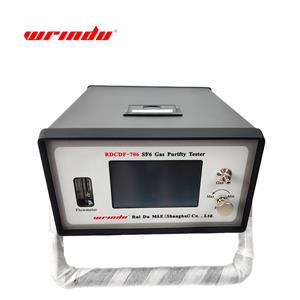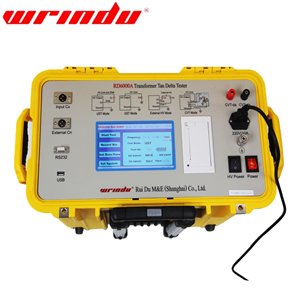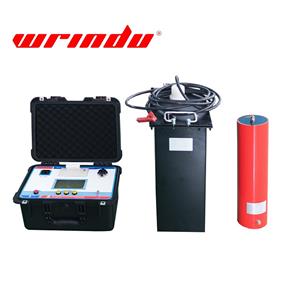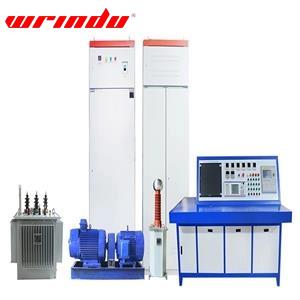Dielectric Strength and Oil Chromatography: Key Insights and Applications
Oil Dielectric Strength Tester VS Oil Chromatography Tester
Why is transformer oil testing so important?
Key Application of Dielectric Strength and Oil Chromatography Testing
Oil Chromatography and Dielectric Strength Testing are both part of Transformer Oil Testing. They are different methods used to assess the performance and condition of transformer oil.
Dielectric Strength Testing
Dielectric Strength Testing is used to evaluate the insulating capability of transformer oil. As the insulating medium in a transformer, the oil must possess sufficient dielectric strength to prevent electrical breakdown. By measuring the oil's resistance to high voltage, this test helps assess its quality and whether it is contaminated. A decrease in dielectric strength may show the presence of moisture, impurities, or other factors affecting its insulating properties, which could lead to transformer instability or even failure.
Oil Chromatography
Oil Chromatography is used to analyze the dissolved gas components in transformer oil. When a transformer operates, internal faults or overheating may cause gases (such as hydrogen, methane, carbon monoxide, etc.) to dissolve into the oil. By analyzing the types and concentrations of these gases, oil chromatography can help detect potential faults or abnormalities, which will show early warnings. This test can reveal issues such as overheating, electrical discharges, or insulation failures inside the transformer.
Test Frequency of Dielectric Strength and Oil Chromatography
Oil Chromatography is typically performed after long periods of operation or when there is suspicion of internal issues within the transformer. It is part of predictive maintenance, which helps to identify early signs of faults, especially when the transformer is operating abnormally. Dielectric Strength Testing is usually conducted on a regular basis, particularly when the transformer has been in service for an extended period or when there are concerns about oil contamination. It plays a crucial role in maintaining the quality of the oil and ensuring the electrical performance of the transformer.
Test Principle of Dielectric Strength and Oil Chromatography
Oil Chromatography involves using gas chromatography to analyze the dissolved gases in the oil, such as hydrogen, methane, ethylene, and others. Changes in the concentration of these gases can show potential thermal, mechanical, or electrical faults which occurs inside the transformer. For example, after conducting the gas chromatography analysis, we found that the test results contained hydrogen (H₂), which typically indicates internal discharges or arcing within the transformer. If methane (CH₄) and ethane (C₂H₆) are detected, this usually points to thermal degradation of the transformer oil or insulation. High concentrations of acetylene (C₂H₂) may indicate severe arcing or electrical faults. In addition, the presence of carbon monoxide (CO) and carbon dioxide (CO₂) generally suggests overheating or insulation damage.
On the other hand, Dielectric Strength Testing involves applying high voltage to test the dielectric strength of the oil. The dielectric strength refers to the oil's ability to withstand voltage without breaking down. It is typically determined by gradually increasing the voltage until the oil undergoes electrical breakdown, which can assess its insulation performance. The results of dielectric strength testing are typically expressed as the maximum voltage the oil can withstand. If the oil's dielectric strength is low, it indicates that the oil has been contaminated or its insulating properties have deteriorated.
Factors affecting test results of Dielectric Strength and Oil Chromatography
In oil chromatography, the concentration of dissolved gases in the oil may be affected by factors such as the transformer's operating condition, temperature, and type of fault. Temperature variations, oil aging, and mechanical faults can all lead to changes in the types and concentrations of gases.
In dielectric strength testing, the quality of the oil, its level of contamination, humidity, and temperature all affect its dielectric strength. Contaminants such as moisture and solid particles can significantly reduce the oil's insulating properties.
How to choose Oil Dielectric Strength Tester and Oil Chromatography Tester?
The following are the summary of choosing oil dielectric strength tester and oil chromatography tester:
| Feature | Oil Dielectric Strength Tester | Oil Chromatography Tester |
|---|---|---|
| Purpose | Assess the insulating properties of oil | Analyze dissolved gases in the oil |
| Test Focus | Voltage withstand ability | Gas concentration for fault detection |
| Parameters | Maximum voltage, breakdown voltage | Types of gases (e.g., H₂, CH₄, C₂H₆) |
| Automation | Can be automated, but not always | Usually automated for faster analysis |
| Standards | ASTM D877, IEC 60156, IEEE C57.106 | IEC 60567, IEEE C57.104 |
| Complexity | Simple, mainly voltage testing | Complex, requires gas analysis and interpretation |
For Oil Dielectric Strength Testing:
We should look for a tester with a wide voltage range, high accuracy, safety features, and ease of use for quick, reliable testing of oil's insulating properties.
For Oil Chromatography Testing:
We should choose a tester with high gas detection sensitivity, automated features, and strong data analysis capabilities to identify and predict potential faults based on dissolved gases in transformer oil.
Find more information about Oil Dielectric Strength Tester.
Click to find Oil Chromatography Tester.




